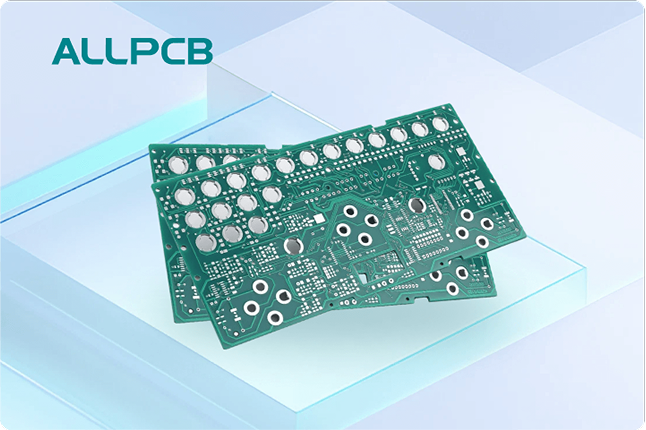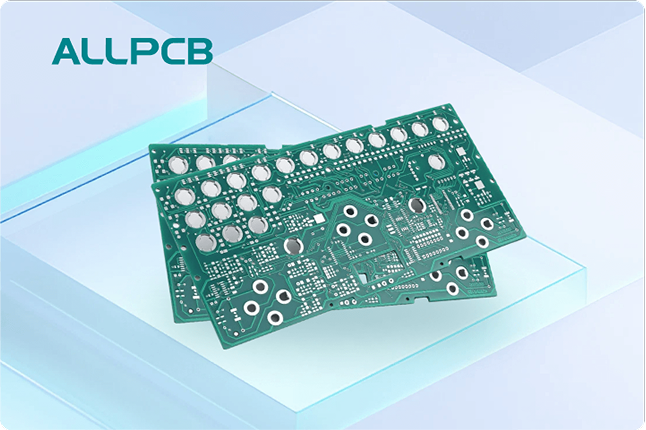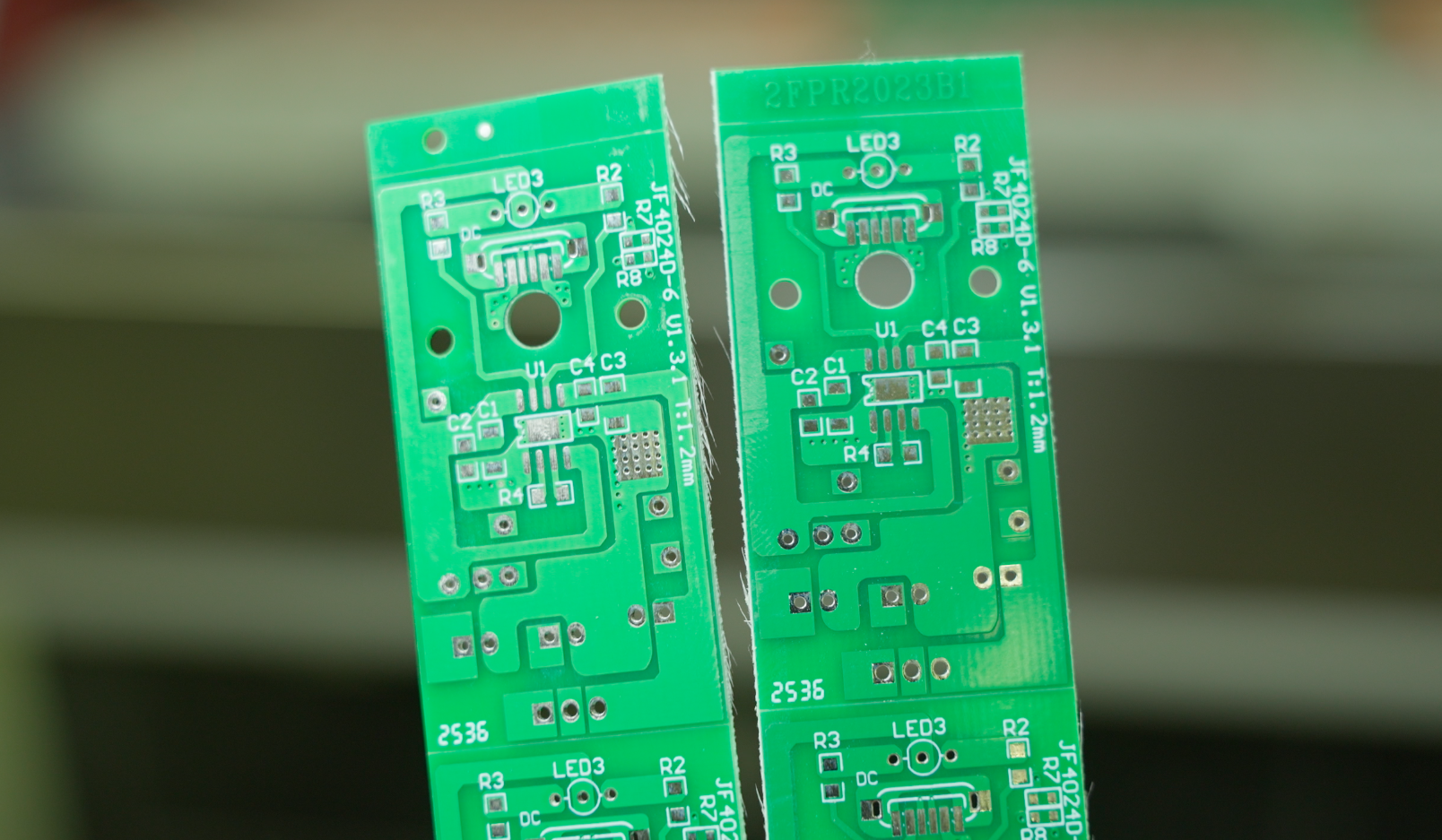If you're struggling with overheating issues in your PCB designs, thermal vias might just be the solution you need. These tiny pathways play a huge role in dissipating heat from critical components to keep your board running smoothly. In this comprehensive guide, we'll dive deep into thermal via design rules, size and placement strategies, the debate of filled vs unfilled thermal vias, resistance calculations, and their importance for SMD components. Let's explore how to leverage thermal vias for effective PCB cooling and ensure the longevity of your electronic devices.
What Are Thermal Vias and Why Do They Matter?
Thermal vias are small, drilled holes in a printed circuit board (PCB) that are lined with conductive material, usually copper. Their main job is to transfer heat away from hot components, like power ICs or high-performance processors, to a heat sink or a larger copper plane, such as a ground layer. By creating a low-resistance path for heat to escape, thermal vias prevent overheating, which can degrade performance or even cause component failure.
Heat management is critical in modern electronics, where components are packed closer together, and power demands are higher than ever. Without proper cooling, hotspots can form, leading to thermal stress and reduced lifespan of your device. Thermal vias are a cost-effective and space-efficient way to tackle this issue, making them a secret weapon for PCB designers aiming for reliability and performance.
Thermal Via Design Rules: Building a Solid Foundation
Designing thermal vias requires careful planning to ensure they work effectively without compromising the structural integrity of your PCB. Here are some key design rules to follow:
- Via Diameter: The size of the via matters. Smaller vias, typically 0.3 to 0.5 mm in diameter, are often used in dense grids under high-heat components. They maximize surface area for heat transfer while minimizing the space they occupy.
- Spacing: Place vias with a spacing of about 1.2 to 1.5 times their diameter. Too close, and you risk weakening the board; too far apart, and heat dissipation suffers.
- Connection to Copper Planes: Always connect thermal vias to a large copper plane, like a ground or power layer. A copper plane with a thickness of 2 oz/ft2 or more can act as an effective heat spreader, distributing heat evenly and reducing hotspots.
- Layer Consideration: Ensure the vias extend to the appropriate layers. For multilayer boards, connect them to internal ground planes for maximum heat distribution.
By sticking to these thermal via design rules, you can create a robust cooling system that keeps temperatures in check without overloading your board's structure.
Thermal Via Size and Placement: Getting It Right
The size and placement of thermal vias directly impact their cooling efficiency. Let's break this down into actionable tips:
Size Matters
As mentioned earlier, smaller vias (0.3-0.5 mm) are ideal for high-density areas because they allow you to fit more vias under a component. However, if you're dealing with extremely high heat loads, slightly larger vias (0.8-1.0 mm) might be better as they can handle more thermal energy per via. The trade-off is that larger vias take up more space and can interfere with signal routing.
Placement Strategies
Place thermal vias directly under or as close as possible to the heat-generating component. For SMD components like QFN or BGA packages, position a grid of vias beneath the thermal pad to channel heat away efficiently. Spread the vias evenly to avoid creating new hotspots. If possible, connect them to both top and bottom copper layers to maximize heat dissipation paths.
For larger components or boards with multiple heat sources, consider staggering the placement of vias to balance heat distribution across the board. Avoid placing vias too close to the edge of the PCB, as this can lead to mechanical stress during manufacturing.
Filled vs Unfilled Thermal Vias: Which Is Better?
One of the biggest debates in thermal via design is whether to fill them with conductive material or leave them unfilled. Both options have pros and cons, so let's compare filled vs unfilled thermal vias to help you decide.
Unfilled Thermal Vias
Unfilled vias are simply plated with copper along their walls, leaving the center hollow. They are cheaper and easier to manufacture, making them a popular choice for budget-conscious designs. However, their heat transfer capability is limited because the hollow center doesn't conduct heat as effectively as a solid material would. They're best suited for designs with moderate heat dissipation needs.
Filled Thermal Vias
Filled vias are packed with a conductive material, such as copper or thermal epoxy, which significantly boosts their heat transfer efficiency. This filling reduces thermal resistance, allowing more heat to move through the via. The downside? Filled vias are more expensive and complex to manufacture. They are ideal for high-performance applications where heat management is critical, such as in power electronics or high-speed processors.
Key Takeaway: Choose unfilled vias for cost savings in less demanding designs. Opt for filled vias when dealing with high heat loads and performance is non-negotiable.
Thermal Via Resistance Calculation: Crunching the Numbers
Understanding the thermal resistance of your vias is crucial for predicting how well they'll dissipate heat. Thermal resistance, measured in °C/W (degrees Celsius per watt), tells you how much temperature rise you'll get for a given amount of heat power. Lower resistance means better heat transfer.
To calculate thermal resistance for a via, you can use the following simplified formula:
R_th = L / (k * A)
- R_th is the thermal resistance (°C/W)
- L is the length of the via (thickness of the PCB, in meters)
- k is the thermal conductivity of the material (for copper, it's about 400 W/m·K)
- A is the cross-sectional area of the via's conductive part (in square meters)
For an unfilled via, the area (A) is based on the copper plating thickness (typically 0.025 mm) around the via's circumference. For a filled via, the entire cross-sectional area contributes to heat transfer, significantly lowering R_th.
Example: For a 0.5 mm diameter unfilled via in a 1.6 mm thick PCB, with a copper plating thickness of 0.025 mm, the effective conductive area is roughly the circumference (π * 0.5 mm) times the plating thickness. This gives a high thermal resistance compared to a filled via of the same size, where the area is π * (0.25 mm)^2. The filled via might have a thermal resistance of around 0.5 °C/W, while the unfilled one could be closer to 5 °C/W or higher, depending on exact dimensions.
By calculating thermal via resistance, you can estimate how many vias you need and whether filling them is worth the cost for your specific design.
Thermal Vias for SMD Components: A Perfect Match
Surface-mount device (SMD) components, such as QFN, BGA, and power MOSFETs, are notorious for generating heat in a small area due to their compact size and high power density. Thermal vias are especially important for these components because they often have a thermal pad on the bottom that needs a direct path to dissipate heat.
For SMD components, place a dense grid of thermal vias directly under the thermal pad. A typical setup might use 9 to 16 vias in a 3x3 or 4x4 grid for a small QFN package, with each via around 0.3 mm in diameter. Connect these vias to a large ground plane on the opposite side of the board to spread the heat. If the component generates significant heat, consider using filled vias to lower thermal resistance and improve cooling efficiency.
Additionally, ensure that the solder mask doesn't cover the thermal pad area, as this can trap heat. Use a proper stencil design during assembly to apply enough solder paste for good thermal contact between the pad and vias.
Best Practices for Maximizing Thermal Via Performance
Beyond the basics, here are some advanced tips to get the most out of your thermal vias:
- Use Multiple Layers: In multilayer PCBs, connect thermal vias to internal copper planes as well as external layers. This creates multiple paths for heat to escape, reducing overall thermal resistance.
- Avoid Overcrowding: Too many vias in a small area can weaken the PCB and cause manufacturing issues. Balance the number of vias with board strength.
- Combine with Other Cooling Methods: Thermal vias work best when paired with other solutions like heat sinks, thermal pads, or forced air cooling. Use vias to move heat to a copper plane, then dissipate it further with a heat sink.
- Simulate Before Production: Use thermal simulation software to model heat flow in your PCB design. This helps identify potential hotspots and optimize via placement before manufacturing.
Common Mistakes to Avoid with Thermal Vias
Even with the best intentions, it's easy to make mistakes when implementing thermal vias. Here are some pitfalls to watch out for:
- Poor Connection to Copper Planes: If vias aren't properly connected to a large copper area, their effectiveness drops dramatically. Always ensure a solid connection to a ground or power plane.
- Ignoring Manufacturing Limits: Check with your PCB fabricator about minimum via sizes and spacing rules. Pushing beyond these limits can lead to defects or increased costs.
- Neglecting Signal Integrity: Placing too many vias near high-speed signal traces can interfere with routing and cause signal integrity issues. Plan your layout carefully to avoid conflicts.
Conclusion: Harness the Power of Thermal Vias
Thermal vias are a powerful tool for managing heat in PCB designs, ensuring your components stay cool under pressure. By following thermal via design rules, optimizing size and placement, choosing between filled and unfilled options, calculating thermal resistance, and tailoring solutions for SMD components, you can significantly improve the performance and reliability of your electronics.
Whether you're designing a simple consumer device or a complex industrial system, thermal vias offer a practical and efficient way to tackle overheating challenges. Implement these strategies in your next project to keep temperatures down and performance up. With the right approach, thermal vias can truly be your secret weapon for PCB cooling.
 ALLPCB
ALLPCB







